Interview with Tower of London Raven

Cawing to all my friends who share my spirit guide, the Raven. The entire globe is excited about William and Kate's Wedding. Those of you lucky enough to be in London, don't forget to visit the Tower of London Ravens. If you are on this side of the pond, fret not, I have had the opportunity to interview one of the Tower Ravens.
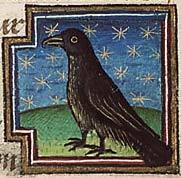 I'm a diehard naturalist who loves scientific nomenclature so let's give it up for the Common Raven, Corvus corax. (My personal political platform: teach people scientific names again!)
I'm a diehard naturalist who loves scientific nomenclature so let's give it up for the Common Raven, Corvus corax. (My personal political platform: teach people scientific names again!)
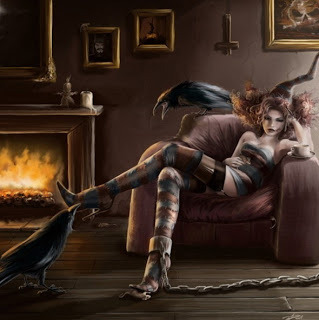
Kingdom: Animalia. This distinguishes animals from, say, plants. We are included in this KingdomPhylum: Chordata. This includes all animals which have, at some point in their, a 'notochord' running down the length of their bodies. The spines of vertebrates put them into this category. We share it with the birds.
Class: Aves. All birds are members of this class, whether they fly or not. Feathers and beaks. Sorry, we humans belong to Class Mammalia
Order: Passeriformes. Commonly called the 'songbirds', these are the 'perching' birds... the ones most people think of when they think of birds. Family: Corvidae. This family includes all the 'crow' type birds, including Magpies, Jays, Nutcrackers, Ravens, and, of course, Crows. The family emerged in the middle Miocene period (23.7 - 5.3 million years ago).
Genus: Corvus. This is the classification especially for ravens and crows. Within this genus are different species of both, but their scientific names all start with 'Corvus'. Species: Corvus corax. The Common Raven ( Corvus corax) is one species of raven. Another is C. cryptoleucus, also known as the Chihuahuan raven, which lives in the SW United States and Mexico.
Interview with Cedric, Raven from the Tower of London
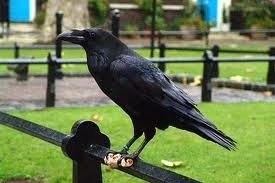
Eva: Who takes care of you and the others in the flock?

Cedric: The Ravenmaster, also known as a Yeoman Warder. He makes sure we are fed, our cages cleaned and we have all day to do as we please on the grounds. At dusk we return to our mews, usually without protests since at night there are the dangers of fox and cats. After all our wings are clipped so there is no escape.
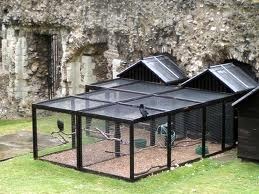
E: How long has there been a Ravenmaster at the Tower?
C: The post of Ravenmaster only goes back about 40 years. Before that, they were called Yeoman Quartermasters. We have always lived in and around the Tower of London. Our free cousins laugh at us because we are never too far. Even during battles. Humans worry too much, though we don't mind war too much because it means more meat. E: What are you fed? C: Every other day we get a boiled egg and chopped apple, grapes and if we are lucky cheese. The best part is we get fresh meat and even my favorite, roadkill. That is if the Ravenmaster determines it's not too damaged. We all love blood soaked biscuits. Caw!
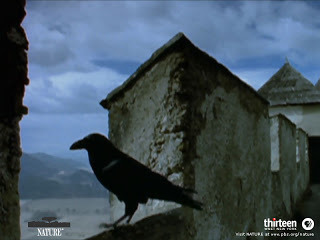
E: How many ravens are there in your flock?C: Always 6, as first decreed by Charles II I (1660-1685) to avoid calamity. On 22 June 1675, the King established the Royal Observatory at the Tower of London, housed in the north-eastern turret of the White Tower. The Royal Astronomer, John Flamsteed (1646-1719), allegedly complained to the King that the birds were interfering with his celestial observations. Charles therefore ordered their demise – only to be forewarned by an obscure soothsayer that: "if the ravens left the Tower, the White Tower would collapse and a great disaster befall the Kingdom".
E: And are there extra ravens in case anything happens to the ones in the Tower? C: Absolutely, but they are kept in wildlife parks until needed to serve our country. I'm never too fond on meeting replacements, especially since the humans can't tell the difference between male and females. Caw! Imagine?E: Do you enjoy visits from the human tourists?C: We do rather enjoy teasing them. We like to bark like dogs and perform numerous antics and watch their beakless mouths gape open. Humans think they are the only ones with a sense of humor and even think they are the only ones that can make tools.
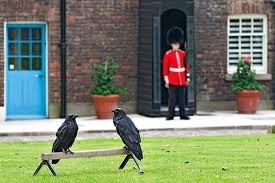
E: So you don't feel inferior to humans? C: Caaaww! Are you kidding we can fly so we don't need to invent cars and planes. And we don't waste food.
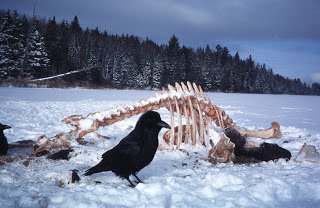
E: Right, that ravenous appetite. Moving to a spookier subject. Do you see human ghosts here at The Tower of London?C: All the time. Old ones, young ones and countless headless ones. E: Does it spook you to see them?C: No. We are messengers between the two worlds, this one and the next.
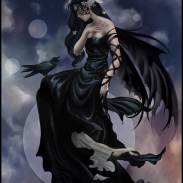
E: Humans think of ravens as magical. Why do you think your presence here at Tower of London protects the British people?
C: It goes back to the tale of Bran the Blessed, the prophetic god-king Bran (which means 'Raven') asks that his head be cut off and buried on the White Mount in London, facing the direction of France. As long as his head remained buried there it would protect the kingdom. The Tower of London was later built on the site of the White Mount, and the magical protective power of the buried head was symbolized by our presence, fulfilling Bran's prophecy and ensures the safety of the realm.

E: Well, thank you for the interview. With the royal wedding bringing in so many visitors to London I'm sure you will get more than the usual visitors.C: Caww! It will be fun to grab ribbons and feathers from hats.Want more? Although City of Ravens by Boria Sax is only available in England, I'm sure City of Ravens will soon make it to America.
City of RavensThe true history of the legendary birds in the Tower of LondonBoria Sax
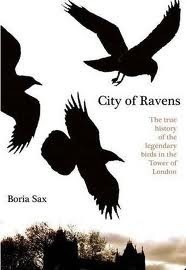 · ISBN 9780715640814· May 2011· £12.99 / Hardback, 256 pages · Subject: History'
Boria Sax's book City of Ravens ... is both a delight and a profound illumination of his subject.
' Esther Woolfson, author of Corvus'
Boria Sax traces the history of the ravens in the Tower of London, with accurate scholarship and engaging stories. Sax . . . reveals both the symbolic power and the true magic of the Tower Ravens today.
' John Marzluff, author of In the Company of Crows and Ravens
· ISBN 9780715640814· May 2011· £12.99 / Hardback, 256 pages · Subject: History'
Boria Sax's book City of Ravens ... is both a delight and a profound illumination of his subject.
' Esther Woolfson, author of Corvus'
Boria Sax traces the history of the ravens in the Tower of London, with accurate scholarship and engaging stories. Sax . . . reveals both the symbolic power and the true magic of the Tower Ravens today.
' John Marzluff, author of In the Company of Crows and RavensWant good music: Listen to Corvus Corax!
Published on April 28, 2011 15:58
No comments have been added yet.



